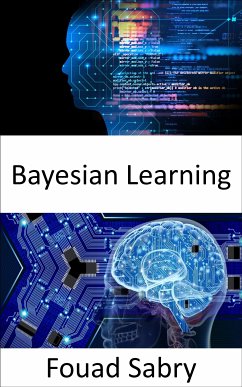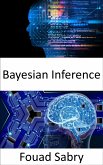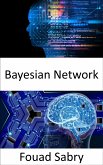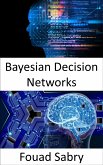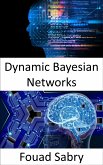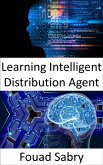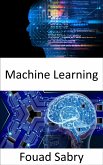What Is Bayesian Learning
In the field of statistics, an expectation-maximization (EM) algorithm is an iterative approach to discover (local) maximum likelihood or maximum a posteriori (MAP) estimates of parameters in statistical models, where the model depends on unobserved latent variables. EM algorithms are also known as maximum likelihood or maximum a posteriori (MAP) estimations. The expectation (E) step of the EM iteration creates a function for the expectation of the log-likelihood evaluated using the current estimate for the parameters, and the maximization (M) step of the EM iteration computes parameters with the goal of maximizing the expected log-likelihood found on the expectation step. These two steps are performed in alternating fashion throughout the iteration. These parameter-estimates are then utilized in the subsequent E phase, which serves the purpose of determining the distribution of the latent variables.
How You Will Benefit
(I) Insights, and validations about the following topics:
Chapter 1: Expectation-maximization algorithm
Chapter 2: Likelihood function
Chapter 3: Maximum likelihood estimation
Chapter 4: Logistic regression
Chapter 5: Exponential family
Chapter 6: Fisher information
Chapter 7: Generalized linear model
Chapter 8: Mixture model
Chapter 9: Variational Bayesian methods
Chapter 10: EM algorithm and GMM model
(II) Answering the public top questions about bayesian learning.
(III) Real world examples for the usage of bayesian learning in many fields.
Who This Book Is For
Professionals, undergraduate and graduate students, enthusiasts, hobbyists, and those who want to go beyond basic knowledge or information for any kind of bayesian learning.
What is Artificial Intelligence Series
The artificial intelligence book series provides comprehensive coverage in over 200 topics. Each ebook covers a specific Artificial Intelligence topic in depth, written by experts in the field. The series aims to give readers a thorough understanding of the concepts, techniques, history and applications of artificial intelligence. Topics covered include machine learning, deep learning, neural networks, computer vision, natural language processing, robotics, ethics and more. The ebooks are written for professionals, students, and anyone interested in learning about the latest developments in this rapidly advancing field.
The artificial intelligence book series provides an in-depth yet accessible exploration, from the fundamental concepts to the state-of-the-art research. With over 200 volumes, readers gain a thorough grounding in all aspects of Artificial Intelligence. The ebooks are designed to build knowledge systematically, with later volumes building on the foundations laid by earlier ones. This comprehensive series is an indispensable resource for anyone seeking to develop expertise in artificial intelligence.
In the field of statistics, an expectation-maximization (EM) algorithm is an iterative approach to discover (local) maximum likelihood or maximum a posteriori (MAP) estimates of parameters in statistical models, where the model depends on unobserved latent variables. EM algorithms are also known as maximum likelihood or maximum a posteriori (MAP) estimations. The expectation (E) step of the EM iteration creates a function for the expectation of the log-likelihood evaluated using the current estimate for the parameters, and the maximization (M) step of the EM iteration computes parameters with the goal of maximizing the expected log-likelihood found on the expectation step. These two steps are performed in alternating fashion throughout the iteration. These parameter-estimates are then utilized in the subsequent E phase, which serves the purpose of determining the distribution of the latent variables.
How You Will Benefit
(I) Insights, and validations about the following topics:
Chapter 1: Expectation-maximization algorithm
Chapter 2: Likelihood function
Chapter 3: Maximum likelihood estimation
Chapter 4: Logistic regression
Chapter 5: Exponential family
Chapter 6: Fisher information
Chapter 7: Generalized linear model
Chapter 8: Mixture model
Chapter 9: Variational Bayesian methods
Chapter 10: EM algorithm and GMM model
(II) Answering the public top questions about bayesian learning.
(III) Real world examples for the usage of bayesian learning in many fields.
Who This Book Is For
Professionals, undergraduate and graduate students, enthusiasts, hobbyists, and those who want to go beyond basic knowledge or information for any kind of bayesian learning.
What is Artificial Intelligence Series
The artificial intelligence book series provides comprehensive coverage in over 200 topics. Each ebook covers a specific Artificial Intelligence topic in depth, written by experts in the field. The series aims to give readers a thorough understanding of the concepts, techniques, history and applications of artificial intelligence. Topics covered include machine learning, deep learning, neural networks, computer vision, natural language processing, robotics, ethics and more. The ebooks are written for professionals, students, and anyone interested in learning about the latest developments in this rapidly advancing field.
The artificial intelligence book series provides an in-depth yet accessible exploration, from the fundamental concepts to the state-of-the-art research. With over 200 volumes, readers gain a thorough grounding in all aspects of Artificial Intelligence. The ebooks are designed to build knowledge systematically, with later volumes building on the foundations laid by earlier ones. This comprehensive series is an indispensable resource for anyone seeking to develop expertise in artificial intelligence.
Dieser Download kann aus rechtlichen Gründen nur mit Rechnungsadresse in A, B, BG, CY, CZ, D, DK, EW, E, FIN, F, GR, H, IRL, I, LT, L, LR, M, NL, PL, P, R, S, SLO, SK ausgeliefert werden.

